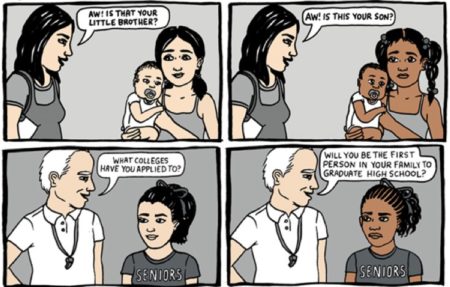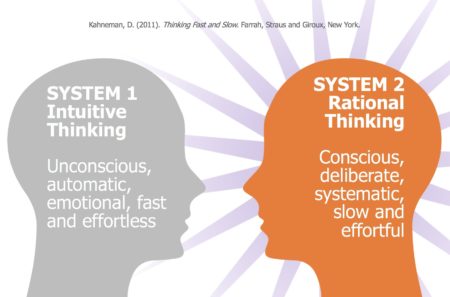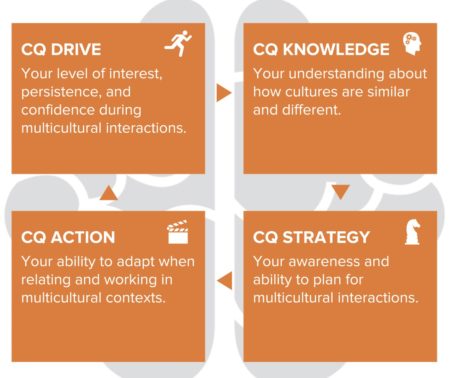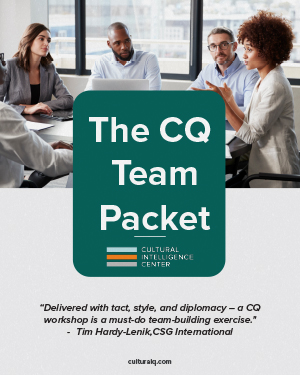Recently, I was at the airport, preparing to depart for a trip. I arrived at my departure gate, navigated the signs, and stood in the clearly labeled first-class queue behind three other passengers. After about 5 minutes of waiting, the gate agent walked past the first three people in my line, and said to me, “Excuse me, but this line is for first-class passengers only.” When I responded with, “Yes, I know. I’m in the correct line,” the agent broke into a wide grin and said, “Oh! You’re flying first-class? How lucky for you!” The agent turned, walked silently past the same three people she didn’t ask initially and went back to the ticket desk.
What is unconscious bias?
In speaking with other professionals outside the diversity and inclusion community regarding unconscious bias, I am often surprised by how many people are still unfamiliar with the term. A widely accepted definition is “learned stereotypes that are automatic, unintentional, deeply ingrained, universal, and able to influence behavior.” (Mike Noon, Professor of Human Resource Management at the University of London)
When thinking of unconscious bias, I am often reminded of a quote from Thais Compoint, author of Succeed as An Inclusive Leader. “Unconscious bias is like jealousy: nobody likes to admit it, and often we’re unaware of it.”
Photos taken from CQ Your Bias workshop
Sadly, we see instances of bias everywhere — from how characters are depicted in popular television programs and films, to commercials for everyday products, to how people are treated in the workplace. Often times, it can be difficult to spot because it is not the same as explicit bias or blatant bigotry. For instance, perhaps you consider yourself to be a very open-minded, liberal person who would never use pejorative language about any group of people but would still quickly cross the street if a group of young black men were walking towards you on the sidewalk. Or, maybe when providing anecdotes to friends and family regarding people who have annoyed or irritated you in some way, you make sure to mention the race or ethnicity of those who are different from that of your own.
In the workplace, recurring costs of bias include disengaged staff, employees who feel the need to hide the most self-valued aspects of who they are, and customers, staff, or students who feel misunderstood or disrespected.
An increasing amount of research demonstrates that simply learning about unconscious bias is not enough to make meaningful changes in employee environment, retention of diverse personnel, or perceptions of unconscious bias. Individuals must consciously manage the application of bias with a high level of cultural intelligence.
According to an article recently published in the Harvard Business Review, “Unconscious bias training can be a useful component of diversity and inclusion efforts, but only if it’s thoughtfully designed with research in mind.”
Cult intel is a form of phenomena Daniel Kahneman calls System 2 thinking—a slower, more deliberate response rather than the impulsive default of System 1 thinking” With System 1 thinking, we rely on our most intuitive, unconscious and automatic ways of digesting and responding to stimuli. However, with System 2 thinking, we actively become more conscious and deliberate in how we react to stimuli.
Photos taken from CQ Your Bias workshop
If we disrupt unconscious bias in the workplace and manage it effectively, there are many proven benefits, including:
- Increased creativity and innovation
- Multicultural effectiveness
- Decreased turnover rates
- Diverse talent hiring and retention
- Staff and client loyalty
- Reduced lawsuits related to personnel complaints
- Increased membership and engagement in Employee Resource Groups (ERGs)
Depending on our life circumstances, bias can take many forms, and the impact can affect us in a myriad of ways. Employees who are consistently on the receiving end of biased assumptions are nearly three times as likely to be disengaged at work. We know that bias can create very stressful environments for employees, where they often struggle to feel emotionally safe.
(Sylvia Ann Hewlett, Ripa Rashid, Laura Sherbin, Disrupt Bias Drive Value Center for Talent Innovation. 2017)
Photos taken from CQ Your Bias workshop
These findings are relevant and matter because bias can shape educational opportunities through discipline rates and teaching approaches for different types of students. It also can shape teachers’ perceptions of student competence.
Furthermore, bias can create customer service and public relations problems when biased based assumptions interfere with delivering excellent customer service and maintaining a brand image. (Center for Generational Kinetics, National Study on Workforce Satisfaction. 2016)
Unconscious Bias Within a Culturally Intelligent Framework
Cultural Intelligence (CQ), the ability to function and relate effectively in culturally diverse situations, is the critical link between simply being aware of unconscious bias and using a System 2 strategy to disrupt its negative impact.
Photos taken from CQ Your Bias workshop
All four of the CQ capabilities are essential for effectively managing bias. It provides a framework to quickly make sense of multicultural situations and avoid faulty judgments. Building your CQ enables you to move from reacting unconsciously to taking more conscious and intentional actions. For instance, when thinking about the example I gave of the gate agent who believed I must have been in the wrong line, perhaps she could have instead made a reminder announcement regarding the lines and which groups should stand where. CQ is a skill that can be measured and improved. The more you develop your CQ, the better your ability to manage unconscious bias.
Photos taken from CQ Your Bias workshop
Utilizing CQ Drive is the first step to manage bias effectively. Your CQ Drive determines the degree to which you are motivated to even think about unconscious bias and its impact personally and professionally. When you develop CQ Drive, it provides the motivation needed to make the extra effort required to manage bias in your everyday interactions and decisions. Someone with a high level of CQ Drive would be extremely motivated to apply System 2 thinking to most of their interactions with people of different cultures and backgrounds.
CQ Knowledge is your understanding of cultural differences, and it includes the ability to identify bias in yourself and others. A person with high CQ Knowledge would be less likely to act on assumptions that they have made about a particular person or group.
CQ Strategy is your awareness of bias in yourself and others and your ability to plan to avoid the application of bias consciously. An individual displaying a high level of CQ Strategy would work to confirm and check what they believe they know about a particular multicultural interaction prior to minimize their chances of applying bias.
CQ Action relates to your ability to adapt your behavior when you interact with people from different backgrounds.
Strategies for Using CQ to Manage Unconscious Bias in the Workplace
Research. Become informed. Learn as much as you can about unconscious bias and its potential impact on your colleagues, employees, and organizational culture. There are several books available that provide useful information on understanding cultural differences and unconscious bias. A personal favorite of mine is “Think Fast and Slow,” written by renowned psychologist and Nobel Prize winner Daniel Kahneman. His groundbreaking book takes a close look at the mind and explains the two systems that drive the way we think.
Learn to Recognize Your Own Bias. Be open to receiving feedback on how your own biases may have impacted others around you. Be willing to make changes in how you apply any biases that you may have.
Implement Ongoing and Long-Term Unconscious Bias Training. Don’t bother utilizing UB trainings if you’re not interested in investing in them long term. In order for your trainings to be effective, they cannot exist as a “one and done” effort within your organization. The most effective programs are continuous and provide many opportunities for learning, growth, and sustained change. It is impossible to move the needle on long-term behaviors and stereotypes after a one-time training.
Develop Strategies and Action Plans. Integrate strategies and action plans for how to mitigate bias within your organization. Go beyond just having conservations and good intentions. Look at how you can standardize programs and procedures to decrease certain types of bias. Ensure that your managers and leaders are uniformly trained and that the talent selection process focuses on objective and quantifiable measures.
Continually Measure and Assess Incremental Changes and Progress. Utilize pre- and post-assessments to measure the impact of your organizational changes. Be sure to collect this data during various stages of unconscious training programs so that you can make the necessary adjustments.





